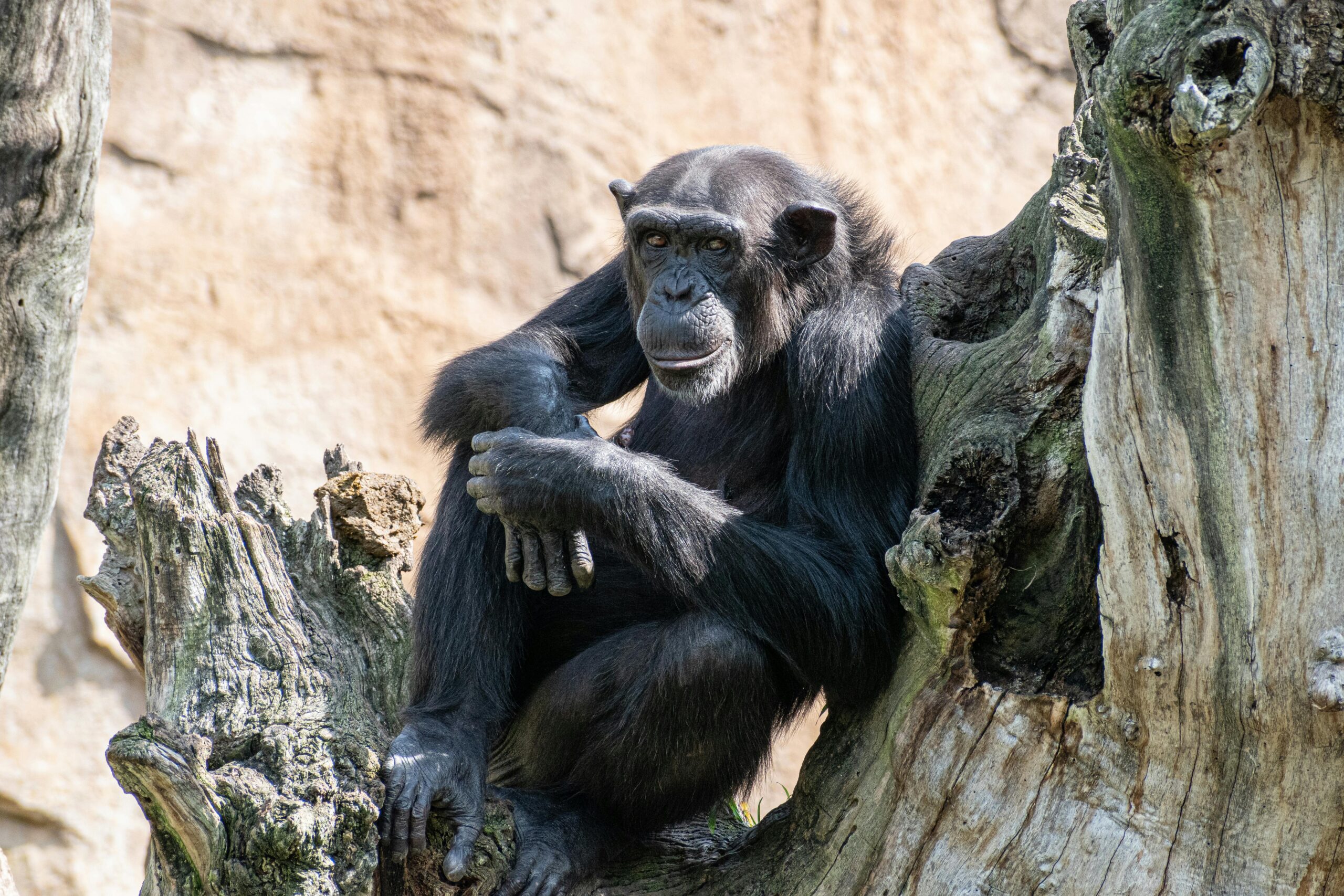Researchers have identified two fundamental elements of human language in wild chimpanzees, one of our closest relatives. Two recent studies reveal that chimpanzee communication features both rhythmic structures and call combinations, key components of spoken language.
These findings offer a broader understanding of how human language may have evolved, according to Catherine Crockford, research director at the French National Centre for Scientific Research in Lyon. They also support previous research on communication in other primates, including orangutans and bonobos.
However, researchers warn that conducting such studies is becoming increasingly difficult due to declining wild chimpanzee populations, impacted by hunting, the pet trade, and habitat destruction.
Meaningful Rhythmic Patterns
One of the studies, published in the journal Current Biology, analyzed the drumming patterns of chimpanzees in the rainforests of East and West Africa. These primates use tree roots as resonant drumming surfaces, communicating over long distances through rhythmic sounds.
Researchers discovered that not only do chimpanzees use rhythmic structures in their drumming, but these structures vary among populations, similar to regional accents or dialects. This suggests that the rhythms are learned and controlled by each individual — essential features of human language.
Combining Calls to Create New Meanings
Another study focused on call combinations among 53 wild chimpanzees in Côte d’Ivoire. Researchers recorded over 4,000 vocalizations, analyzing how the meaning of calls changed when combined.
For instance, a “hoo” call often means a chimp is resting, while a “pant” call indicates play. However, when these calls are combined, they are more likely to signal that the chimp is building a nest.
These findings suggest that the ability to combine sounds to change meanings may have been a critical step in the evolution of human language.



